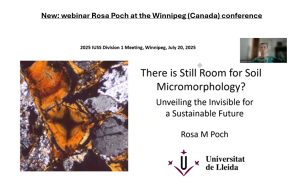This section aims to elaborate ideas, initiatives and any additional info on image analysis applied to all field of soil micromorphology. This section is led (temporarily) by Fabio Terribile (University of Napoli Federico II, Italy). For any contribution, please write to fabio.terribile@unina.it.
Basic information :
Digital image processing and image analysis played vital roles in advancing the field of soil micromorphology and soil microscopy, revolutionizing the way researchers examine and interpret microscopic features within soil samples. By harnessing the power of digital technology, scientists are able to extract quantitative data, enhance visualization, and automate analyses, leading to more accurate and comprehensive understanding of many soil features including soil pores and microstructures and many other soil features such as foe example Fe-Mn concretion, clay coatings, rock fragments.
One of the key benefits of digital image processing in soil micromorphology is the ability to enhance the visualization of microscopic features within soil thin sections. Through techniques such as contrast enhancement, noise reduction, and image sharpening, researchers can improve the clarity and resolution of digital images, revealing subtle details and textures that may be difficult to discern with traditional microscopy alone. This enhanced visualization enables scientists to identify and analyze microscale features with greater precision, facilitating the interpretation of soil formation processes and sedimentary environments.
Moreover, digital image processing allows for the quantitative analysis of soil features both in 2D and 3D, enabling researchers to extract morphological and textural parameters from digital images. Through image segmentation, feature extraction, and pattern recognition algorithms, scientists can quantify properties such as grain size, pore geometry, and mineral composition within soil samples. This quantitative data provides valuable insights into soil properties, depositional processes, and environmental conditions, enhancing our understanding of soil formation dynamics and landscape evolution.
In addition to quantitative analysis, digital image processing facilitates the automation of repetitive tasks in soil micromorphology (as for processing large sample size), streamlining workflows and increasing research efficiency. By implementing image processing algorithms and machine learning techniques, researchers can automate tasks such as particle identification, feature classification, and image annotation, reducing the time and effort required for manual analysis. This automation accelerates data processing, enables large sample size studies, and enhances the reproducibility of results, fostering collaboration and knowledge exchange within the scientific community.
Furthermore, digital image processing enables the integration of multi-modal imaging techniques in soil microscopy, combining data from optical, electron, and FTIR microscopy to create comprehensive 3D reconstructions of soil microstructures. Through image fusion, registration, and visualization tools, researchers can overlay and integrate data from different imaging modalities, enhancing the depth and accuracy of soil microstructural analysis. This multi-modal approach enables scientists to explore soil samples at multiple scales, from micrometer to nanometer resolution, revealing insights into hierarchical structures and complex interrelationships within soil matrices.
In conclusion, digital image processing and image analysis are indispensable tools in soil micromorphology and soil microscopy, facilitating visualization, quantification, and automation of analyses. By harnessing the capabilities of digital technology, researchers can unlock the hidden complexities of soil microstructures, advancing our understanding of soil formation processes, environmental dynamics, and landscape evolution.

